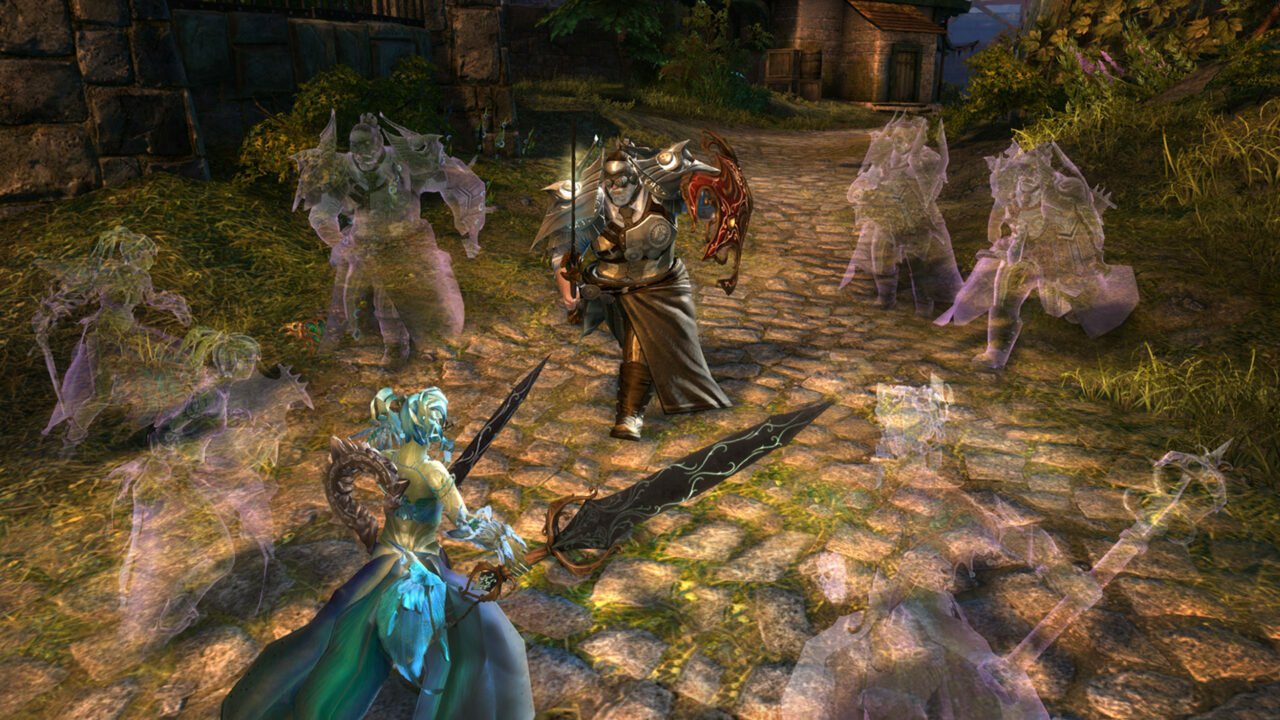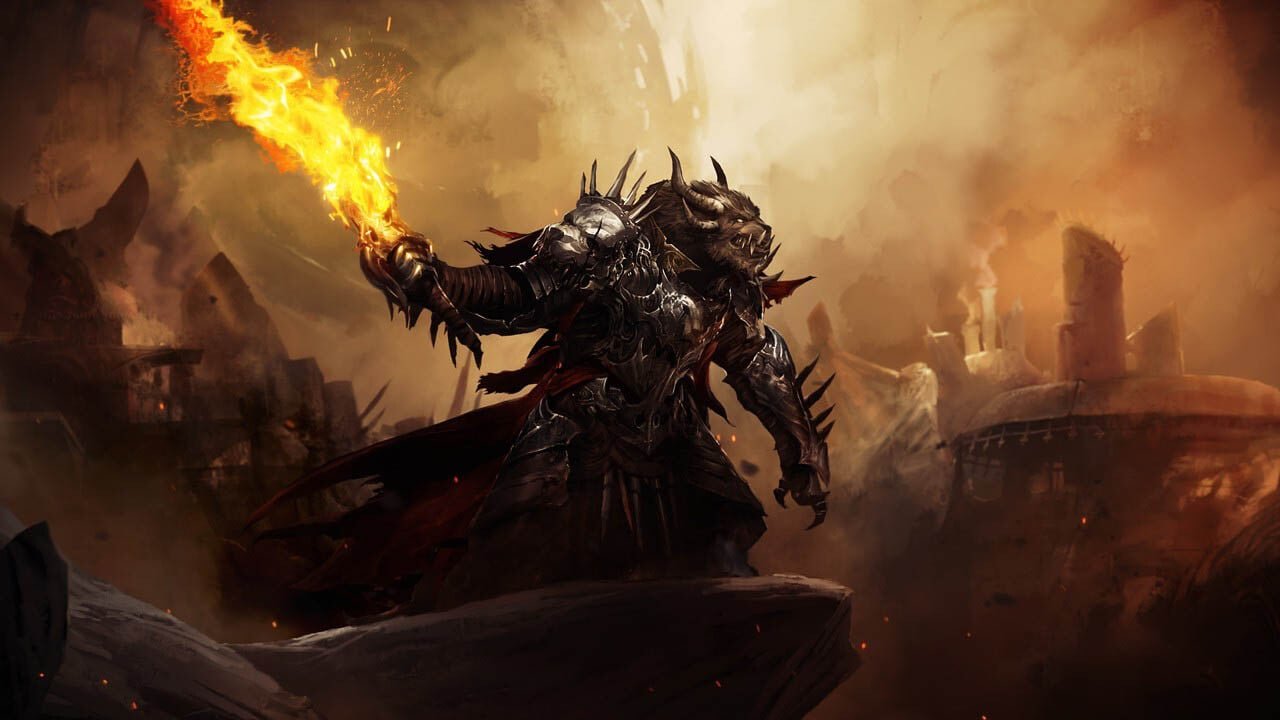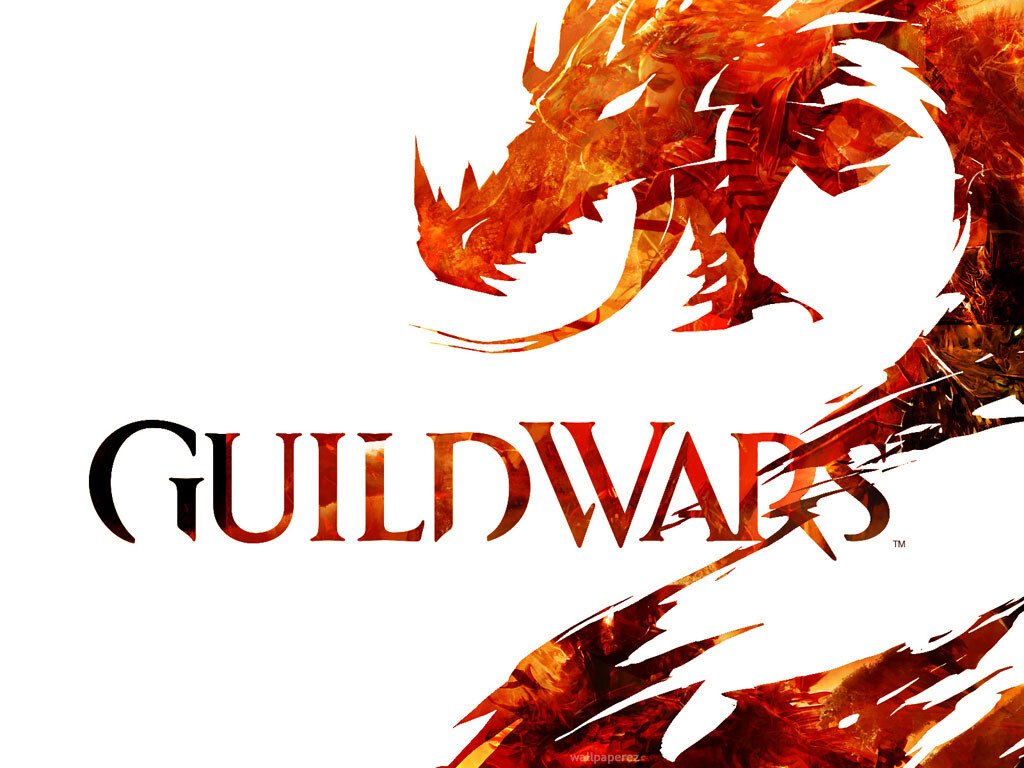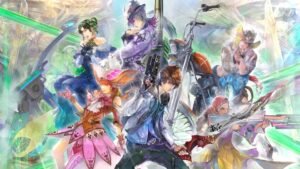Massively multiplayer online role-playing games, or MMORPGs are developing new and experimental paths in the last year or so. New quest mechanics, new ways of telling story, and even different combat mechanics are a welcome break from the World of Warcraft clones which are dominating the market. Most of these games only offer one stand-out feature (TERA’s dynamic combat system, Star Wars: the Old Republic’s involved storyline), and neglecting other aspects has led to their stand-out features floundering. MMOs can’t survive on single great features.
Guild Wars 2 does provide something new and inventive. Even if it’s often drawing upon features other games presented before, it combines them in such a way that sets it distinctly apart from other MMOs. Better, it executes itself amazingly well, providing a strong gameplay experience along with a driving story.

The original Guild Wars was the first MMO I really played and got me interested in the games in general. It had no subscription fee, and was based on personal instances so that other players didn’t intrude on ones environment. Furthermore, it encouraged exploration to find new areas and monsters. Guild Wars 2 is a far different games in terms of structure, but it keeps enough of the features to remain distinctly similar to its predecessor, and manages to strike an amazing balance. The game takes place two hundred years after the original game, set in a fantasy-hybrid of medieval and industrial revolution technology. The games’ metaplot centers around a group of five adventurers called Destiny’s Edge (one from each race) who attempted to fight an Elder Dragon and failed. As the game progresses, you see the tensions and relationships underlying the group and their schism over the events of their fateful battle, all while you perform your own personal quests.
The plot varies, depending on your race; what’s interesting is that there are multiple options per race, based on questions answered during character generation. These options modify ‘your story’ (as the stylized art cutscenes depict, narrated by your character), giving you different quest chains (which in themselves have several branches you can follow that change the plot). Functionally, they’re not much different, but they’re enjoyable and give a sense of story.
The gameplay quest mechanics, however, is where the game shines, and stand out from other MMOs in their accessibility. Main world quests, or ‘events’, don’t require you find the quest-giver before participating – simply being in the area when these are in progress is enough. Completing these quests unlocks further events based on the chain – even failing an event can unlock new ones, as you scramble to undo the mistakes of your last adventure. For example, one early human quest has you defending a reservoir from bandits who are trying to poison it – if you fail, a new event is unlocked where you need to gather ooze to make an antidote. These events are extremely friendly, if someone easy to achieve gold ranking (based on participation in the event criteria) due to a low threshold. You can even leave at any time and still get credit.

This mechanic, startlingly enough, applies to all the main world quests – including individual monsters. Gone are the days of loot rolls or kill stealing – if you contribute meaningfully to killing an enemy, you get full credit and your own loot drop. Even resource nodes can be mined by multiple people, giving each of them the full allotment. You don’t need to group up to share in it, which makes group events more accessible – Champion enemies require a group to take down, and even people who just happen by can join.
For an antisocial player like me, this is an amazing thing. It encourages players to cooperate and help out fellow players. Grouping up is still possible, and is essential for dungeons, which exist and non-linear, high-level areas. This greatly cuts down on personal drama, and while it still exists, loot ninjas are a thing of the past.
Combat and skills are dynamic and fun, similar to TERA in terms of engagement and mobility. Players can roll to evade attacks, and nearly all abilities allow you to move while fighting, making combat about dodging and movement as much as damaging. I find combat slightly more dynamic than guild wars, as the enemies seem to make better use of the game’s style. AoE attacks are marked by white circles (red for hostile attacks), letting you know what to dodge, and linear shots are common. There are even combos, where attacking someone under the effect of a specific attack leads to new results (giving the raiders something complex and organized to do, if they want).
Where combat excells, however, is PvP, or World versus World (WvW). Set in clusters of castles and gated walls, groups of players take supply depots to repair gates and build siege equipment to take down enemy structure. Furthermore, matches last a long time, rather than a mere short timed period to take castle – it feels like a war, going back and forth and to take control of, and defend, fortresses and supply bases. You can even escort supply caravans to move supplies to castles. Siege weapons are a blast to use, and feature in both main environment and WvW.

The graphics are decent, on their own, but also present the main weakness in the game’s presentation. they have a gritty quality to them befitting the setting’s industrial motif. The character designs are the most impressive; they combine medieval and more industrial aesthetics, including steampunk technology. Each race has a distinct motif, ranging from the natural tree-structures of Sylvari to the blackened metal tanks of the Charr. The vistas are interesting and impressive, if not breathtaking graphically, and the vista points show them off well.
The problems with graphics lie with the game’s significant bugs. Some textures won’t load properly, fading in and out as you move, and certain objects disappear from certain angles. These never quite break the game as far as I know, though I’ve had some crashes to desktop. As of game start, the mail system would stop working, and trading posts still don’t work as of the date of writing, and no person-to-person . There’s also quite a few events that simply don’t work, with objectives missing or waves of enemies simply not triggering. While this never prevents you from moving on, it does prevent full completion, which can get profoundly irritating.
This game has largely impressed me, much like its prequel that started my love of online RPGs. With no subscription fee and a wealth of fun content, it appeals to both MMO and single-player RPG fans, and is definitely worth considering.






